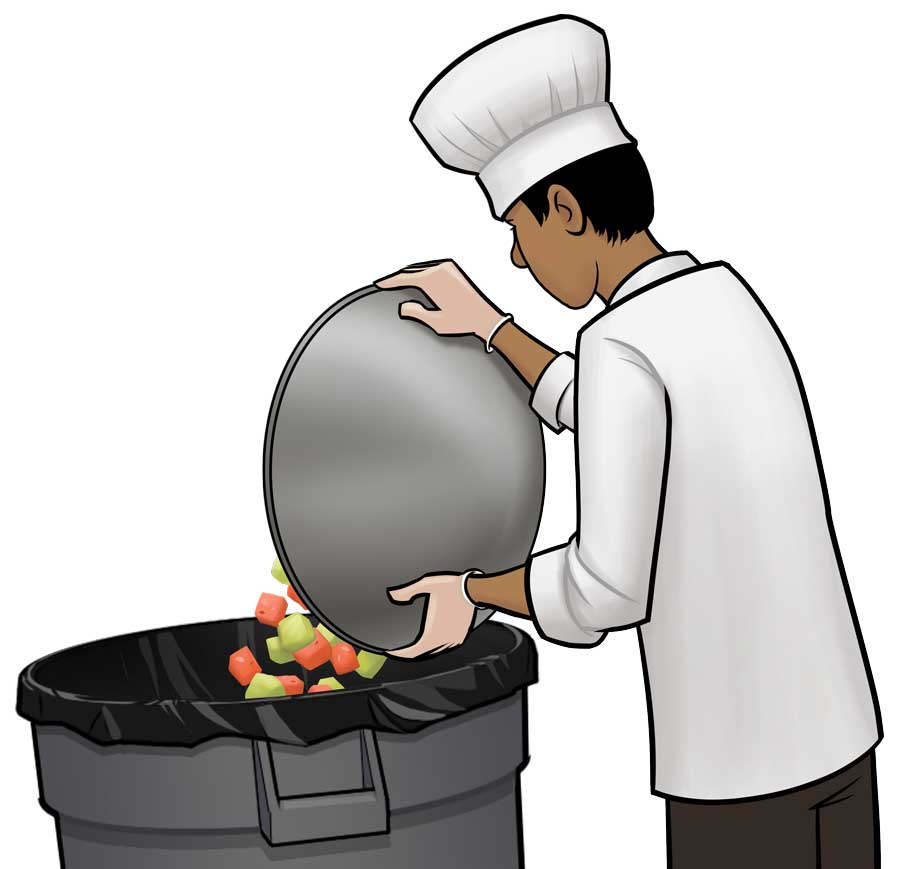 Food waste is a common problem in many households and food establishments. In fact, about 133 billion pounds of food go to waste each year in the United States! So what can you do to help reduce the food you waste? Follow these guidelines to help you reduce waste—and save time and money—in both your food establishment and at home.
Food waste is a common problem in many households and food establishments. In fact, about 133 billion pounds of food go to waste each year in the United States! So what can you do to help reduce the food you waste? Follow these guidelines to help you reduce waste—and save time and money—in both your food establishment and at home.
Date marking foods
One of the most helpful things you can do to reduce food waste is to date mark leftovers. In most cases, you should mark time/temperature control for safety (TCS) foods with a use-by date seven days from the day it was prepared, with the prepared day being day one. For example, if you cooked chicken on a Sunday and then refrigerated it, you would mark that the chicken expires on the following Saturday.
If you prepare a meal with multiple ingredients, mark it with the earliest ingredient use-by date. For instance, if you make lasagna with ground beef that is two days old, you’ll mark that the lasagna expires five days from the preparation date.
In addition to date marking food you have already prepared, you should also know how to read the various dates listed on food packaging. There are different labels, like “Use by,” “Sell by,” and “Best By” dates, which usually indicate when the food is at its best quality. Learn more about understanding those types of dates in this article.
Using the FIFO method for food storage
The First In, First Out method, commonly known as FIFO, is a great way to help reduce food waste. Essentially, you place the oldest food at the front of your storage shelves and add fresher food behind it. This storage method makes it easy for you to use the oldest food first, before it goes to waste.
If you do notice that a food is past its use-by date, don’t be afraid to throw it out. You don’t want to get yourself and others sick, so pay attention to those dates!
Knowing when food waste is unavoidable
Food recalls
Some food waste is unavoidable, and that’s okay. One instance that food should be thrown away is during a food recall. Manufacturers can issue recalls for a variety of issues, such as undeclared or mislabeled allergens, microbial problems, or foreign matter contamination. In one recent situation, a manufacturer recalled more than 40,000 pounds of ground beef products after it realized they could be contaminated with pieces of hard plastic.
Typically when food is recalled, the manufacturer will give instructions on what should be done with the food, like if it should be returned or discarded. If you find that you have a recalled food item, follow the instructions provided to avoid sickening your customers or yourself.
Food spoilage
 In addition to food recalls, food that is stored improperly can spoil quickly and go bad before its use-by date. If you suspect that a food could be bad, be sure to throw it away. Mold and off odors or colors are good indicators that food has spoiled. You should also throw away any dented or bulging cans, as they could contain Clostridium botulinum bacteria.
In addition to food recalls, food that is stored improperly can spoil quickly and go bad before its use-by date. If you suspect that a food could be bad, be sure to throw it away. Mold and off odors or colors are good indicators that food has spoiled. You should also throw away any dented or bulging cans, as they could contain Clostridium botulinum bacteria.
If you have any questions you’d like to ask our in-house food scientists, fill out this one-question survey! For more information about food safety and other food safety tips, check out our food handlers course.
— Janilyn Hutchings



